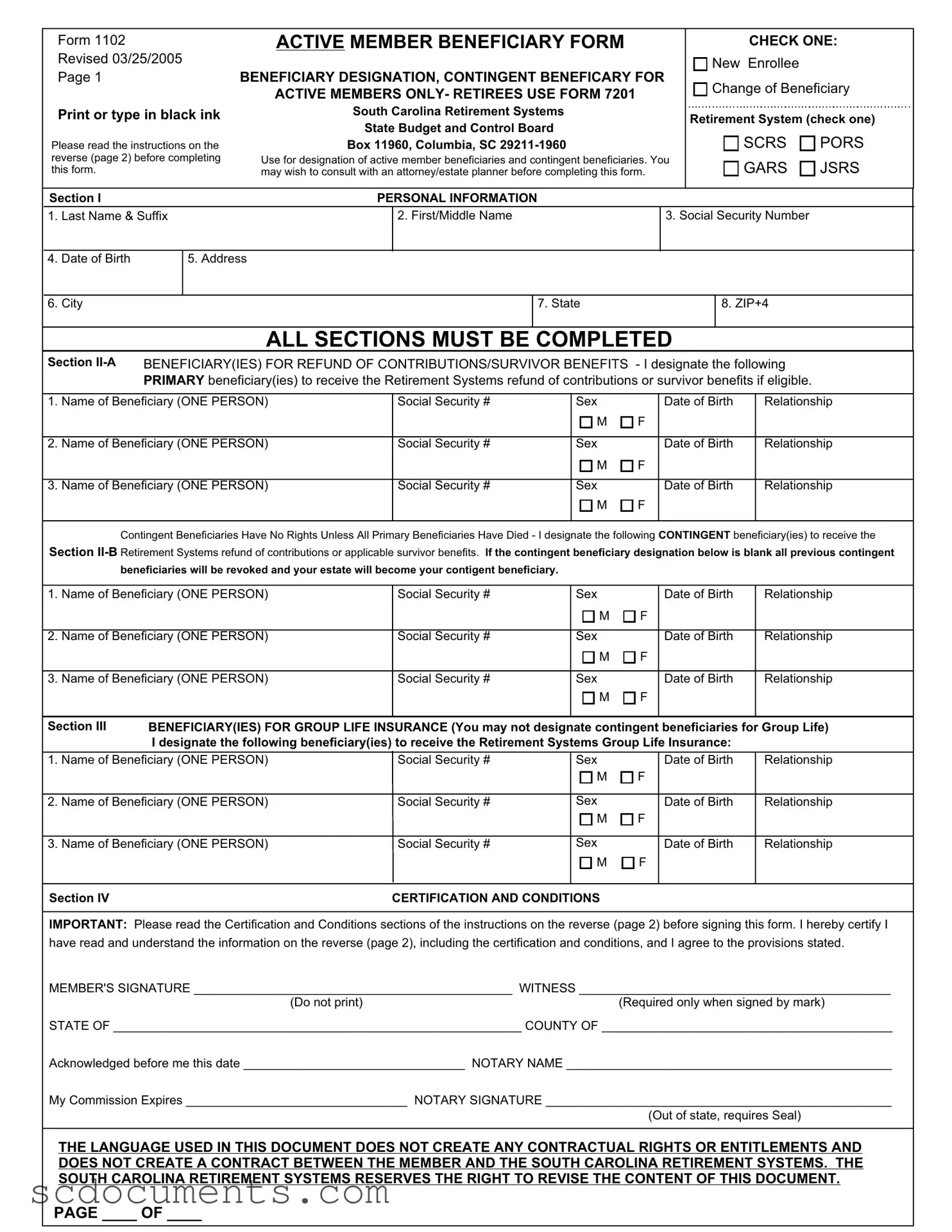Blank South Carolina 1102 Template
The South Carolina 1102 form is an essential document used by active members of the South Carolina Retirement Systems to designate beneficiaries for retirement contributions and survivor benefits. This form ensures that funds are allocated according to the member's wishes in the event of their passing. Completing the 1102 form accurately is crucial, as it directly impacts the financial security of designated beneficiaries.
Access My South Carolina 1102
